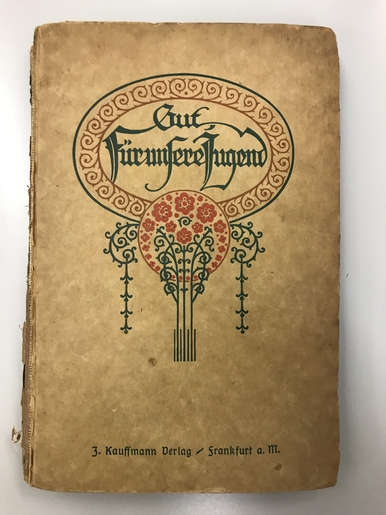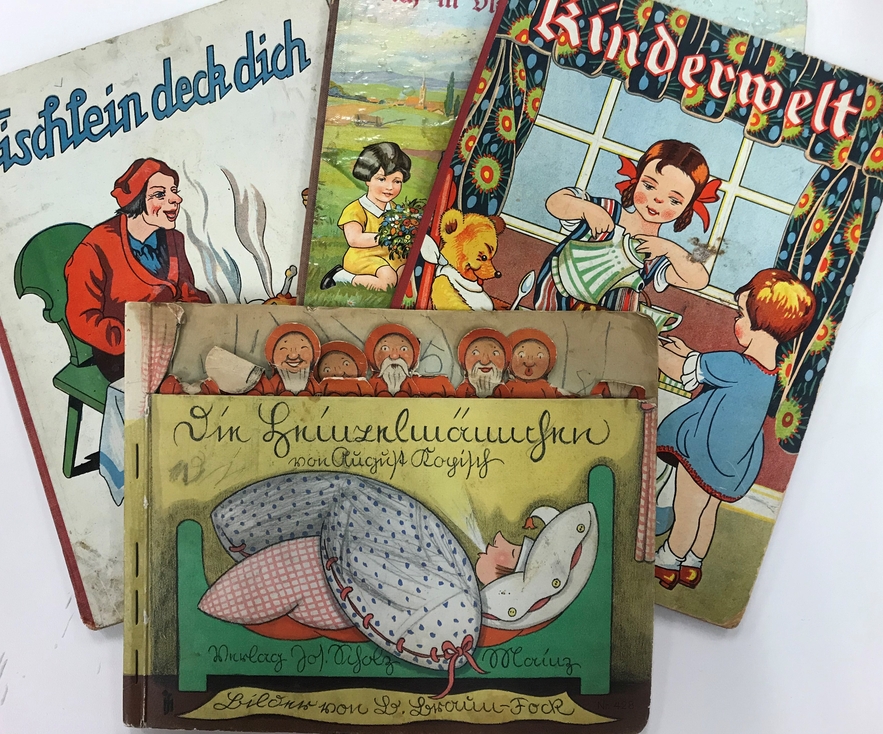Inventing German-Jewish Children's Literature - Part 2
Becoming "Gebildet"







Children's literature and textbook are perhaps indicative of the cultural shift to German as the mother tongue towards the end of the 19th century. In these last decades of the 19th century, German-Jewish children read books in German and German-Jewish authors often wrote books for a general audience. While books in Hebrew continued to be published, the cultural center for Hebrew and Yiddish literature moved to Eastern Europe (with a brief rise in Germany during the Weimar Republic). By the end of the 19th century and beginning of the 20th century, Jewish texts teaching German disappeared, perhaps because German-Jewish children were fully integrated into the German school system. Similarly, books teaching Jewish morals and values to children were published in German.

Children’s literature of the late 19th and early 20th century reflected a culmination of Enlightenment influence in creating a German-Jewish identity in children. The emphasis on “Bildung” (“cultivation”) showed a cultural shift in literature as German-Jews joined the German bourgeoisie. Mendelssohn’s Enlightenment values can be seen in the role of mothers, who were expected to teach their children good character, manners, and responsibility. The highest praise for a child was to say he was “obedient,” and unruly children were considered “ungebildet” (“uncultivated”). (Parent note: Many popular and beloved 21st century children’s books, like Dawn McMillan’s I Need a New Butt or Adam Rex’s On Account of the Gum, would be considered “ungebildet.”)
A greater number of children’s books were published in the 19th century and reading for leisure became a common pastime for bourgeois families. German-Jewish children’s authors published German-Jewish "Unterhaltungsliteratur" ("middle-brow or popular literature"), such as Eugenie Werthauer's Freitagabend und andere Erzählungen für die Jugend (“Friday evening and other stories for children”). Werthauer’s stories showed a "bürgerlich-jüdisches" family life with an emphasis on the religious ceremonies of Jewish life: Seders, holidays like Passover and Hanukah. Werthauer's book was intended to serve as an instructional guide to middle-class religious observance.

However, many children also enjoyed reading non-Jewish authors, and Jewish authors frequently wrote and illustrated books for both Jewish and non-Jewish children. German classical writers were both popular reading material as well as symbols of acculturation for older Jewish children. Jewish authors such as Lina Morgenstern and Berthold Auerbach wrote secular children's books for a general German audience. Berthold Auerbach in particular was highly regarded for his recognition as a German author and served as a model of German-Jewish integration into the general German literature. Written for a general German audience, Auerbach's Barfüssele was a very well-known novel up to the turn of the 20th century. The novel depicted the story of two poor, orphaned children in a Black Forest village. The girl at the center of the story defined herself through her abilities and work, eventual marrying a wealthy farmer’s son. Barfüssele had no distinct Jewish theme but it was a popular literary-pedagogical book for Jewish children from the ages of 9 to 15.

In the 20th century, many authors became part of mainstream German culture. Tom Seidmann-Freud, the eccentric niece of the well-known psychologist, wrote children's textbooks and avant-garde picture books with moving parts. Many stories by Else Ury, including her popular Nesthäkchen series, reflected her strong middle class values and make little connection to her Jewish heritage. While Tom Seidmann-Freud died by suicide shortly before the advent of National Socialism, Else Ury was barred from publishing and eventually murdered in Auschwitz. Both authors are still recognized today for their work in children's literature.

Bibliography:
Hyams, Helge-Ulrike. Jüdisches Kinderleben im Spiegel jüdischer Kinderbücher : eine Ausstellung der Universitätsbibliothek Oldenburg mit dem Kindheitsmuseum Marburg. Oldenburg, Bibliotheks- und Informationssystem der Universität Oldenburg, 1998.
Kaplan, Marion A. (editor). Jewish Daily Life in Germany, 1618-1945. Oxford : Oxford University Press, 2005.
Kaplan, Marion A. The making of the Jewish middle class: women, family, and identity in Imperial Germany. New York : Oxford University Press, 1991.
Shavit, Zohar, et al. Deutsch-Jüdische Kinder- und Jugend-Literatur von der Haskala bis 1945 : die deutsch- und hebräischesprachigen Schriften des deutschsprachigen Raums. Ein bibliographisches Handbuch. Stuttgart : J.B. Metzler, 1996.
